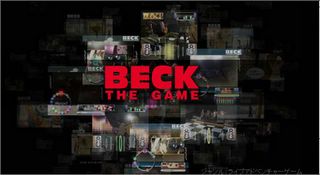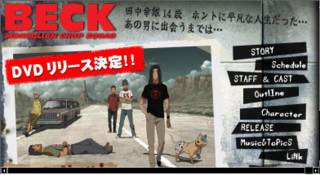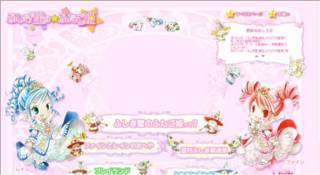“Hate the Jailbait: Why Underage Fangirls Should Be Feared By All”
“Little Miss Hyperactive: She's sweet 13 and has drunk SO MUCH SODA in the past six hours that she can't stop moving, can't stop giggling, can't stop screaming, and can't stop spending Daddy's money on bootleg CDs and toy magic wands. Warning - they travel in packs, and once they get old enough to discover boys, they get REALLY dangerous.” --From “The Fourteen Types of Annoying Anime Fan” by Dave Merrill
Back in the days before anime was in its own section at Suncoast, anime fandom consisted mostly of college guys, often with Computer Science or Electrical Engineering backgrounds. You know, GEEKS. Female fans were a distinct minority; my guess is that most just didn’t want to attend events where legions of pasty, overweight guys would leer at them, though it’s possible that they were all just trying to avoid being hit on by Mike Tatsugawa. In recent years the male/female percentage breakdown at anime conventions and for anime fans in general has drawn closer to the ideal 50/50, so that’s an improvement at least superficially. Now, what this statistical trend that I just invented from thin air doesn’t reveal is that nearly all of those females are what I’d consider children (under 21). And…screw it, I’m gonna say it: this group of fans in particular irritates me the most. Now, I’ve been accused of only seeing the worst in people and making assumptions about the whole based solely on worst case exceptions, and I’m going to fess up and admit that these accusations are entirely true. I’m sure there are probably many cordial fans that wouldn’t bother me in the slightest, but it’s the bad example of the obnoxious ones that casts a pall upon the rest due to their standing out more. So when I say that these underage girls are the bane of anime fandom because they’re catalysts to the influx of non-anime related activities to our conventions, and that more importantly their conduct grates on my nerves, try not to get TOO upset as you read through this. But just in case, I’ll put my email address at the end of this so you can let me know just HOW upset. Now, maintaining the standards of argument validity when talking about something that personally annoys you may not be possible, but let me see if I can try and half-ass it when I talk about how underage fangirls are an impetus in bringing about non-anime related crap to a convention near you.
There’s a whole bunch of stuff going on at anime cons nowadays that technically doesn’t have jack to do with Japanese cartoons at all when you really think about it, and the only reason they continue to be there is because if these things were done away with, attendance would most likely drop significantly. Case in point: cosplay! Yep, I fail to see how cosplay as it is today has anything significant to do with anime. Who do I blame? THE UNDERAGE FANGIRLS, THAT’S WHO! Before I go on, let me note that I hate all cosplay—not just the underage fangirls—and personally think it has its own fandom and thus should have its own conventions separate from anime conventions. With that in mind, based upon analysis of Lionel “Linus Lam” Lum’s coverage of Anime Expo 2001 over at http://www.usagichan.com (which consisted of going through every page of costumer photos and keeping count), APPROXIMATELY fifty to seventy five percent of costumers were females that DIDN’T look like they were of drinking age to me! That’s RIDICULOUSLY high I know, and you also have to consider that Secret Agent Linus Lam loves the chicks, but the POINT is still that even if my eyes were so bad as to introduce a 30% margin of error (due to stuff like counting people that are too old or accidentally counting a guy in drag) the number of jailbait female costumers is very high.
“So what the f*ck does some OTHER practically made up statistic have to do with your point?” you ask? Well, like I said earlier, costuming these days isn’t about the anime anymore. Sure, you might actually dress up as a character from some Japanese cartoon, but from this viewpoint it’s about that ego boost. Yeah, it’s really about getting everyone to look at you and take your picture, or going to the mall or Japanese restaurant/bookstore in full costume just to see how many people stare. The best example of this mindset is “visual kei,” or dressing up at Japanese hair-metal bands. Let it be said once again that visual kei has as much to do with anime as dressing up as characters from videogames that haven’t been made into crappy animated movies/OAVs does; in other words, NOTHING. If you’re at a con, look around during the day. See any…say, Final Fantasy or fighting game costumers? Unless they’re someone from Final Fantasy Unlimited, that stupid set of Final Fantasy OAVs, or some OAV/movie that just might contain dinosaurs that are invisible, their costume probably has nothing to do with Japanese cartoons!
Back to what I was saying: the ones who tend to be into the “visual kei” thing best illustrate what I consider the contemporary cosplay mentality (despite their actual numbers being quite small), AND…they coincidentally are practically all jailbait female types! And if it’s hasn’t really got anything to do with Japanese cartoons, I say go somewhere where you can do that stuff there to your heart’s content as long as it’s not at the convention dedicated to Japanese animation. I understand that the reasons for costuming are diverse and many (love of craftsmanship, heck maybe you really do like the character you’re dressing up as!), and I wouldn’t have as big a problem if cosplayers were all restricted to one area because then I could just not go there (a good personal solution but not an ideal solution for fandom as it doesn’t address the issue of relevancy), but as it is, these people are everywhere and more often than not, the girl with the wings as part of her costume that’s taking up unnecessary space on the elevator looks like she’s a teenager to me. But wait, I did say the young fangirls were a catalyst for the influx of non-anime related activities, right? All this stuff about “underage fangirls are the majority of cosplayers who as a whole don’t appear to concern themselves with anime, which effectively dilutes the spirit of fandom” still doesn’t directly address that issue, so I’d best elaborate or else be subdued by the “OH IS THAT YOUR ONLY EXAMPLE” counterpoint.
Remember when I said that anime fandom used to be mostly guys? Well, now that there’s girls there too, the guys damn sure want to share the same interests they’ve got cause maybe they’ll like, score and stuff! Hey, bubbly underage fangirls LOVE crossplay (dressing up as a character of the opposite gender), and what do you know? Crossplay has become much more popular over the last few years, especially among guys! That doesn’t have anything to do with the fact that some fangirl who just might be their girlfriend thinks it’d be cool, WOULD IT? Sure, there’s always been that 40 year-old hairy guy dressed as Sailor Moon that’s at every con, and the “guys do stuff because chicks dig it” justification applies to all walks of life (“hmm, the only games that a significant percentage of girls play at arcades is Bemani stuff; I know, I’LL LEARN TO PLAY DDR!”), but the influence is still there and I believe it’s more significant than people think. I mean, with regards to that videogame thing, normal anime fans or gamers (from my perspective) would never play a game where you have to actually MOVE, now would they?! As it is, I can only wonder what would happen to the current fan base if these girls stopped liking guys who like anime/cosplay/crossplay/Bemani. Would it all go on without any real change, or would a lot of guys coincidentally lose interest all of a sudden? And WHAT, ONLY TWO EXAMPLES, EACH OF WHICH ARE STRETCHING IT? Well, this section originally had a portion on the whole “plushies” phenomenon but I had to cut it for space...and since I cut out 1000 words, just pretend that what got cut contained the justification. Or don’t.
What it all boils down to is that these people just behave in a way that I can’t stand. Since I’m sure many can’t stand me, it all balances out. But is there any other group that SQUEALS as loudly as possible as often as the underage fangirls? I for one would much rather listen to Torgo’s theme from “Manos, the Hands of Fate” on loop for a week rather than hear that sporadically at conventions and anime club meetings. That alone is enough for me, but the underage fangirls also appear to be the ones that by far and away write the most fan fiction. Now, there’s a simple and easy to remember rule to follow when it comes to fan fiction:
ALL FANFICTION IS TOTAL SHIT. ESPECIALLY YOURS, BITCH.
In addition to this, the giggly underage fangirl demographic is also pretty much 100 percent responsible for all the yaoi (a Japanese word which when translated from the Japanese by a team of academics roughly translates to HOT MANLOVE ACTION) fan fiction. I’m not going to fault their taste in anime (not now anyway), but even if the previous fan fiction rule I noted was untrue, these works would still be horrible since they all depend on extrapolating homosexual relationships from SUBTEXTS that every underage fangirl who writes this stuff INSISTS is present between ANY two male characters who so much as appear in the same scene together. My personal solution is to just not read fan fiction, but again, covering your ears and repeating to yourself that “LA LA LA EVERYTHING IS FINE” isn’t really going to affect fandom. Of course, neither is bitching about it like what I’m doing now, but it’s more preferable than my other solution, which is simply killing them all.
After all I’ve said, call it a hunch but I doubt that anyone will really agree with what I just wrote for any variety of reasons, many of them good ones. But it sure seems to me like underage fangirls—while not the direct CAUSE of most problems, really—sure are speeding up the rate of decline, so to speak. I’m probably just drawing conclusions based on the activity of a vocal and highly visible minority, but for now I’ll just stick to avoiding all these people as much as possible. The problem is that it’s getting progressively harder and harder to distance myself from this sort of thing, and the “well if you don’t like it, then either don’t go to the con or quit your whining” ultimatum often presented is not a real long-term solution for fandom as a whole (it could work for just ME). The only “real” solution it seems is time; theoretically time will pass and the people whose behavior strikes me as abhorrent will either mature or disappear, but it appears that in reality while that may be true, a new generation of fans exhibiting the same behavior will come in to replace them—probably in greater numbers—and will continue to do so as long as conventions and fandom itself encourages it.
I understand that anime conventions have to cater to the needs of the whole rather than to the needs of just me (and how unfortunate is THAT?!), but that doesn’t mean I shouldn’t voice my opinion on the matter. The time-honored solution for disillusioned fans like myself is to staff a convention (or start one anew) in the hopes of instituting change, but as you can see my views are probably too extreme to be put into practical use. I mean, “get rid of all the cosplayers and make them start their own con?” I think I’m more content with thinking, “it wouldn’t work, but what if…” than actually seeing the ideas fail. Besides, I’m a guy that likes anime but detests anime fans on the whole (but if that’s true, why am I so concerned about the state of fandom, HUH? Good question, I’ll get back to you on that someday), so don’t worry about any of my viewpoints dictating con policy anywhere. Now have fun waiting in line for eight hours and navigating congested halls because a group of fangirls had to stop and get their pictures taken right there.
Daryl Surat welcomes all comments and can be contacted via e-mail at darylsurat@hotmail.com. And no, he isn’t gay despite all the SUBTEXTS and doesn’t hate women even though they all have hideous GIRL GERMS that you’ll get if they touch you.
With An "E"
-
Let me start with a personal note. I grew up in the US, but twenty years
back I moved to Ontario to begin a new adventure north of the border. As a
new Can...
1 week ago

























